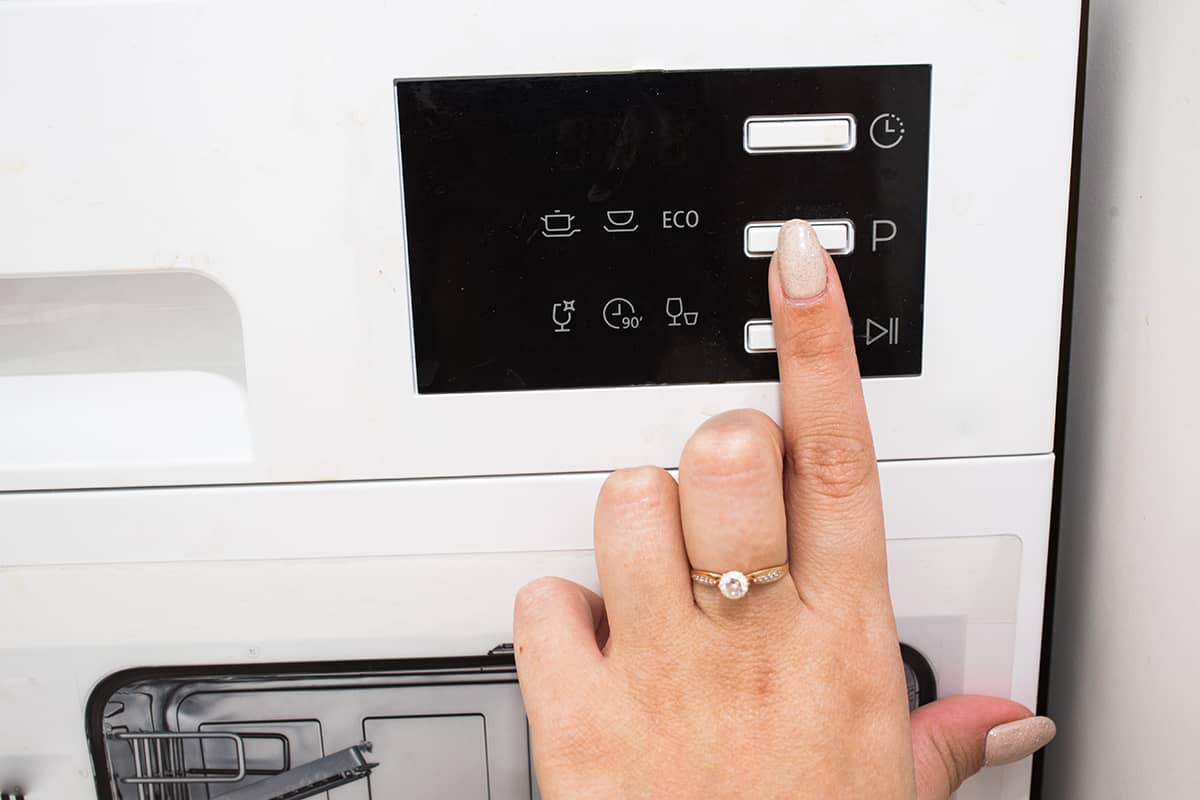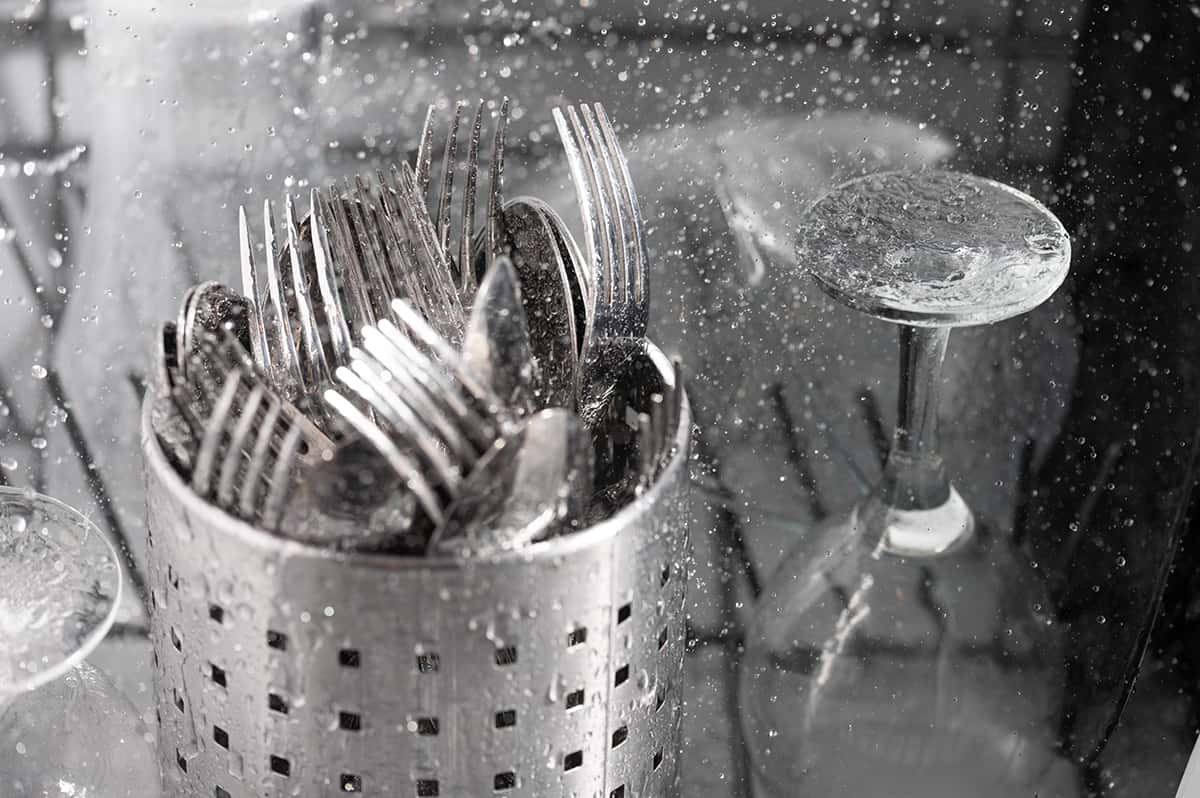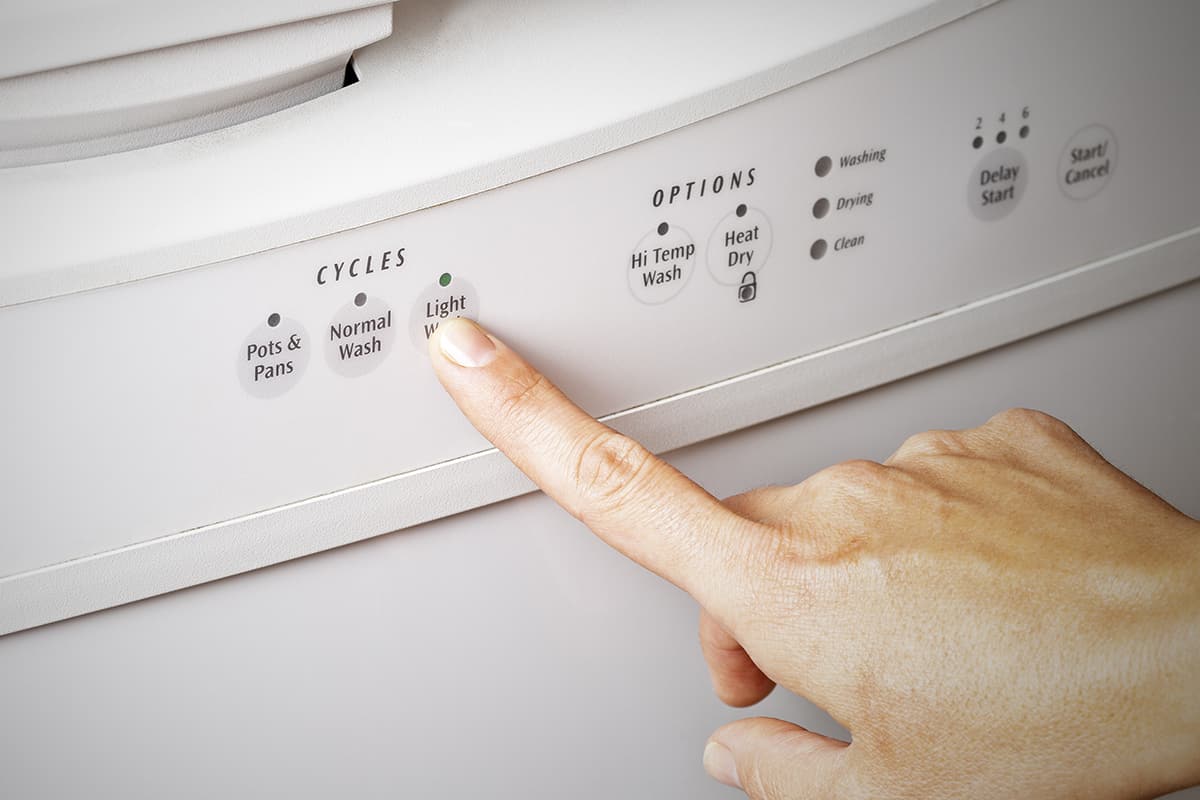When it comes to dishwashers, Bosch has set itself apart by producing some of the most reliable—and not to mention the quietest—dishwashers on the market.
However, before getting a Bosch dishwasher, or any dishwasher for that matter, it’s generally a good idea to know what sort of wash cycles the appliance has to offer.
Most of Bosch’s dishwashers will come with 5 washing cycles, while others will also have additional washing settings to cut through intense stains. Depending on the model, you can expect the following dishwasher cycles: auto, heavy, delicate, express, normal, sanitize, half-load, and rinse & hold cycles.
If you’re thinking of purchasing and installing a Bosch dishwasher at home, you might have a few more questions in mind. For instance, how do the dishwasher cycles differ, and which cycle should you choose? You can find the answers to these questions down below.
Bosch Dishwasher Cycles Explained

One thing Bosch dishwashers are known for is versatility. You get this from a Bosch-made dishwasher in the form of choosing one of several dishwasher cycles.
Depending on the model, you will get as few as 5 cycle settings or as many as 7 or beyond! To determine what dishwasher cycles are available in your dishwasher model, you should check out the official Bosch website and look for the downloadable instruction manual.
To simplify things, I will cover the 5 “mandatory” dishwasher cycles you will find in the majority of Bosch dishwashers, as well as many more widely used add-on cycle settings.
Auto Wash Cycle
The Auto Wash Cycle activates Bosch’s complex soil-sensing capabilities, which makes it perfect for eliminating solid food waste from a mixed load of dishware.
It also activates state-of-the-art sensors that automatically adjust water temperatures to cut through thick grease while also minimizing energy consumption. You can expect your dishwasher to run for up to 135 minutes, wash at 162°F, and rinse at 162°F on the Auto Wash Cycle.
Heavy Wash Cycle
If you need to clean dishware with caked-on food or thick layers of oils and fats, this is your go-to wash cycle. The Heavy Wash Cycle will even clean the largest load of dishes, pots, and pans that the dishwasher can safely hold (according to the instruction manual), thereby reducing how much manual soaking and scrubbing the user has to do.
It will take about 135 minutes to complete a cycle while using 162°F water to wash and rinse the dishes. This wash cycle also uses the most energy as it may constantly switch between cold- and hot-water consumption.
Delicate Wash Cycle
Bosch has made it possible to wash delicate heirlooms, such as fancy china, silverware, and crystal dishes, thanks to the Delicate Wash Cycle. For 80 minutes straight, the Bosch dishwasher will spray low-temperature jets of water to get rid of light stains from delicate objects. It washes at 122°F and rinses at 156°F.
Express Wash Cycle

As its name suggests, the Express Wash Cycle is the fastest dishwasher cycle Bosch has to offer. It works for just around 30 minutes to get rid of light stains from dishware, glassware, and utensils. This is the recommended wash cycle if you don’t need the dishwasher to cut through thick layers of grease. It will wash your dishes at 162°F while rinsing at 122°F.
Normal Wash Cycle
Whether you’re unsure of which wash cycle to use or want to activate the right cycle for general-purpose cleaning, the Normal Wash Cycle should be your first choice.
It combines the best of Express Wash and Heavy Wash Cycles to ensure that solid and greasy residue will not reside on the surface of your dishware while also maximizing energy efficiency. A Normal Wash Cycle takes anywhere from 90 to 115 minutes to complete. It uses 156°F water to wash and rinse the load.
Sanitize Cycle
The Sanitize Cycle’s main purpose is to kill as many germs and bacteria on the surface of your dishes and cutlery as possible. It does so by spraying powerful jets of heated water (usually 151°F) on the surfaces of every loaded item.
However, this is usually an add-on mode to any of the other wash cycles. So, even though it still uses detergent, it might not offer the best cleaning capabilities as a standalone wash cycle.
In addition to sanitizing your dishes, this wash cycle is also great for heating up your plates, bowls, and cutlery. That way, you won’t have to worry about heating anything up prior to serving homemade meals, though you will still have to wipe off any residual water droplets.
Half-Load Cycle
Oftentimes, you might only have to load your dishwasher to half capacity or even less, depending on how many dirty dishes you have to deal with.
Instead of loading dirty dishes and waiting for a fully loaded dishwasher, you can activate the Half-Load Cycle on your Bosch Dishwasher. It works similarly to the Normal Wash Cycle but uses much less water and energy due to the reduced wash load. As such, the Half-Load Cycle will take anywhere from 30 to 45 minutes to finish while using 162°F water to wash and rinse.
Rinse & Hold Cycle
The Rinse & Hold Cycle does exactly what you’d expect—it’s used to spray your dishes and cooking utensils clean with high-pressure jets of water, after which you can store your dishes inside the dishwasher overnight to dry out.
This wash cycle works only for about 15 minutes at a constant water temperature and is used after you have manually soaped and scrubbed your dishes by hand. You can also activate the Rinse & Hold Cycle after running one of the other dishwasher cycles for good measure.
Delay Wash Cycle
This isn’t technically a wash mode as its purpose is just to delay the wash cycle. Let’s say you want your dishes done by the following morning, but you tend to forget to activate the dishwasher.
By turning on the Delay Wash Cycle, your Bosch dishwasher will remain on standby mode for up to 24 hours before it starts one of the aforementioned wash cycles. You can override the Delay Wash Cycle by manually starting another wash cycle.
If you like this article, be sure to check these.






